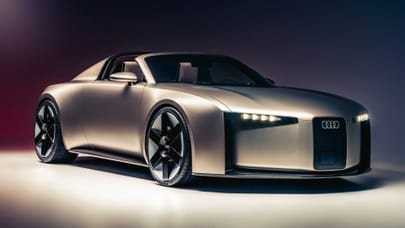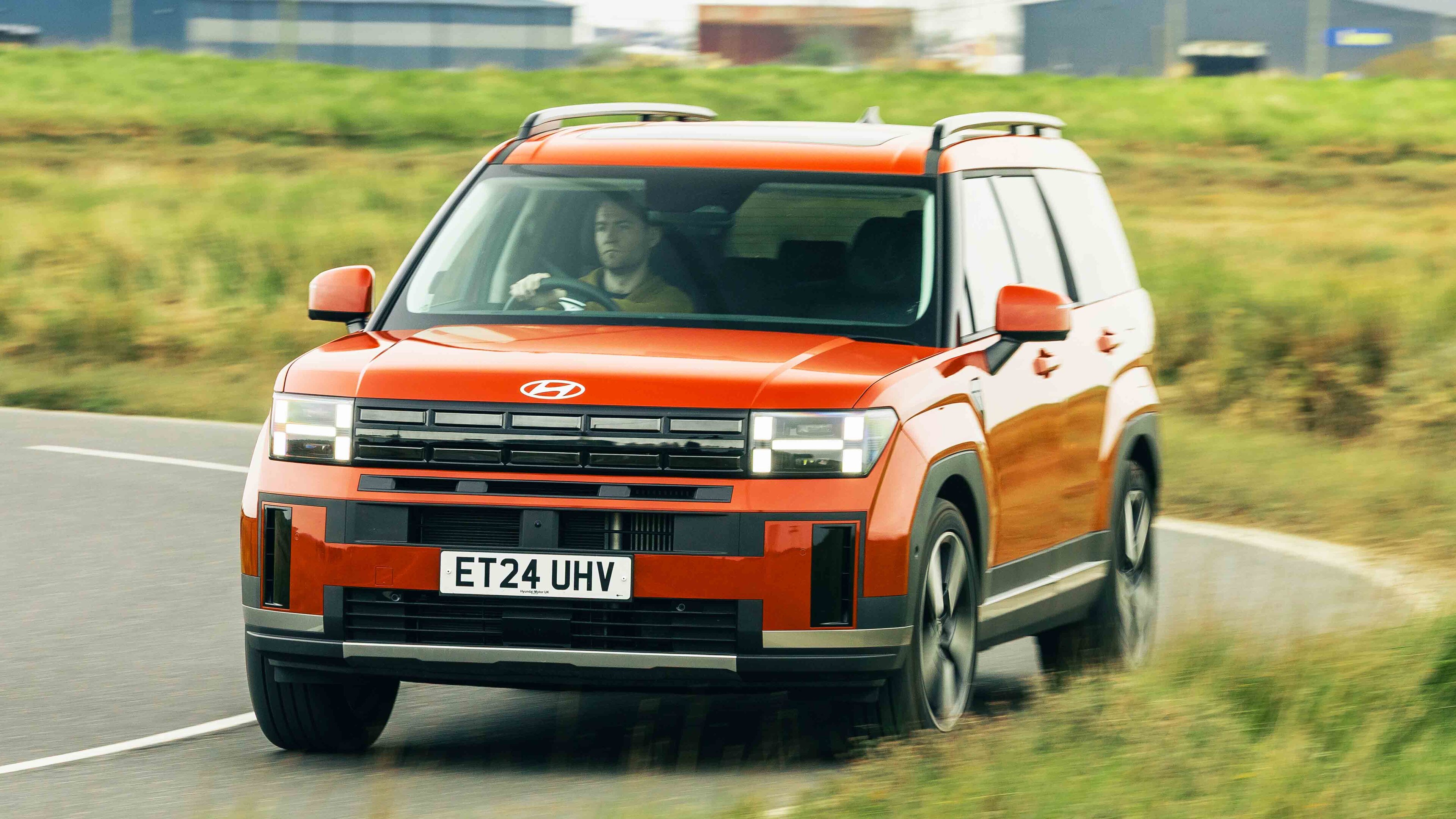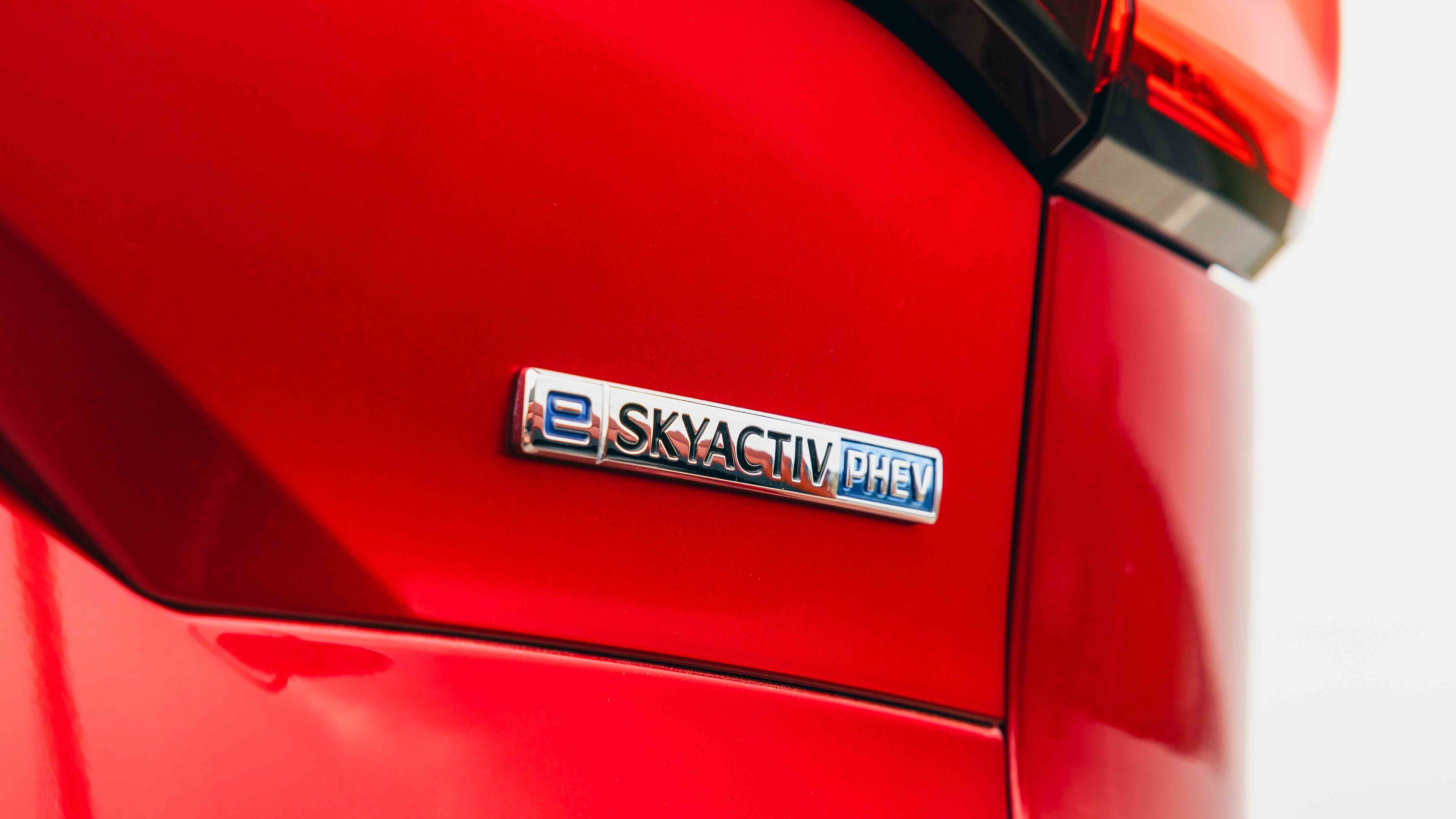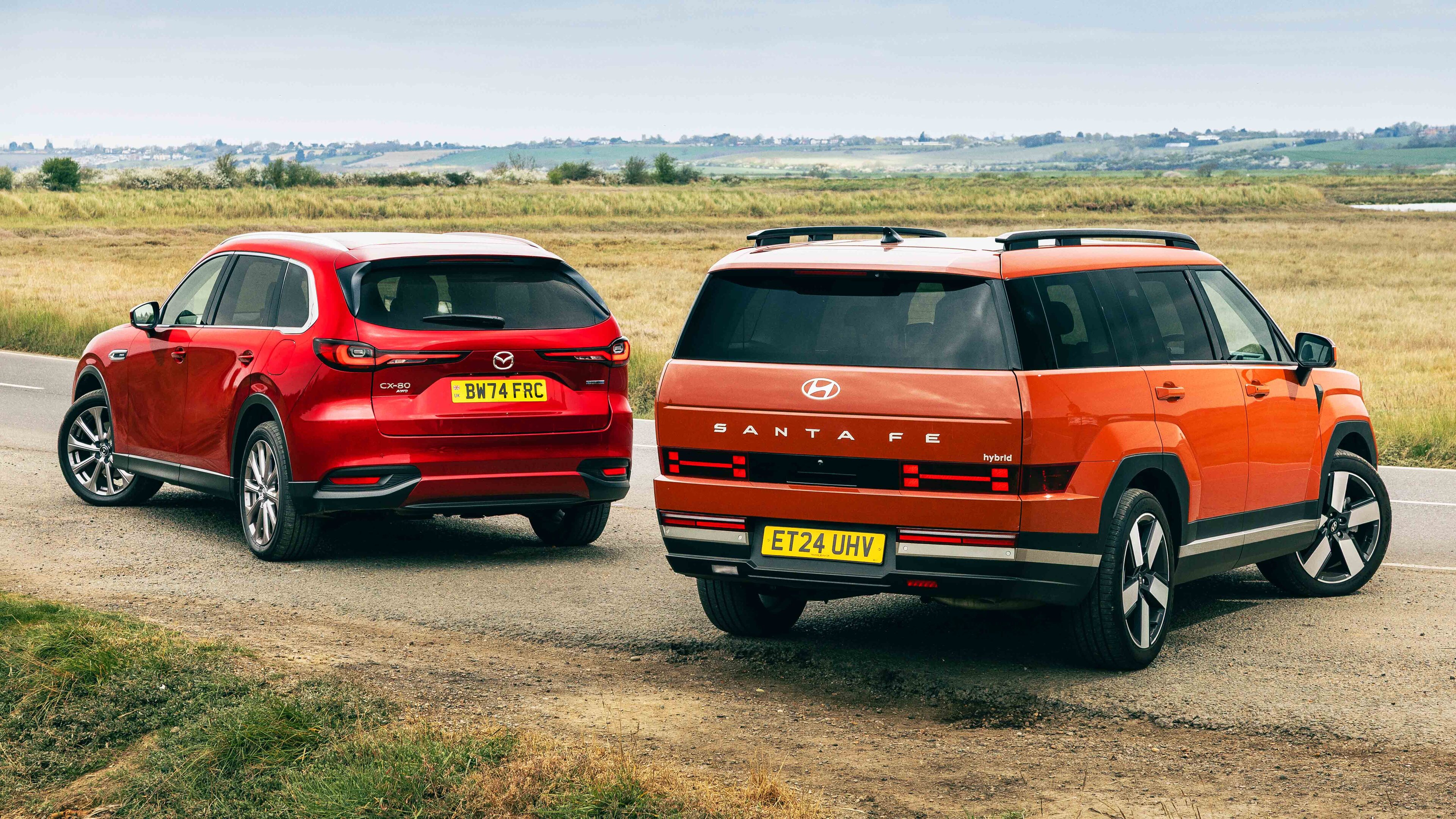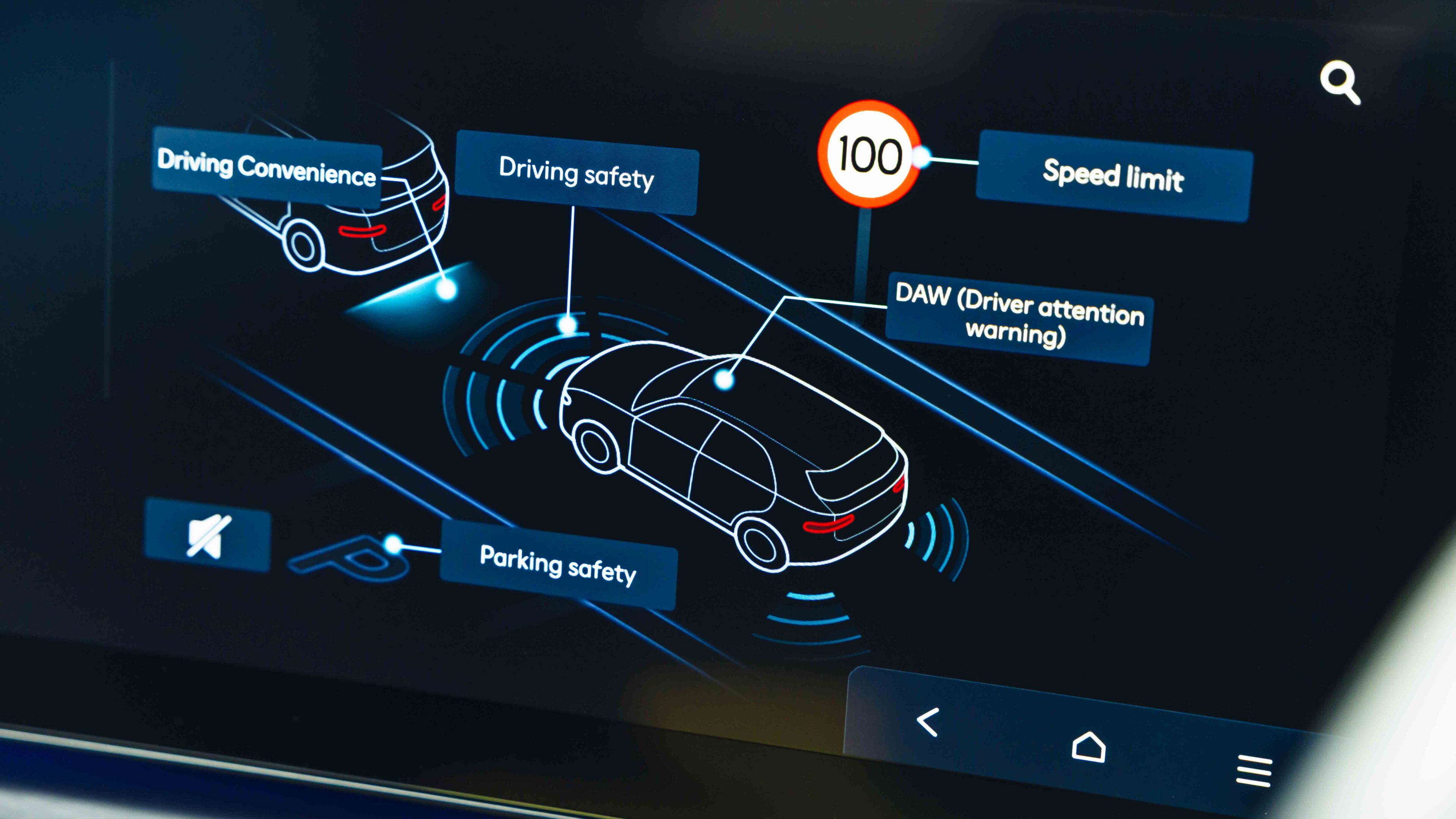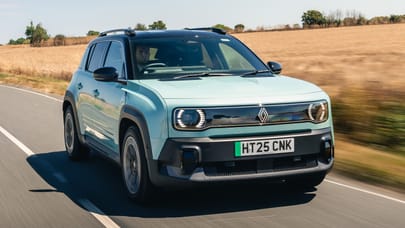
Battle of the seven seaters: Hyundai Santa Fe vs Mazda CX-80
These days family buses come in all shapes and sizes. What if you’re after one that the kids won’t be embarrassed by?
Is this the best looking seven seater you can buy right now? Rave all you like about the Range Rover or new Volvo XC90 or Volkswagen ID. Buzz, but it’s up there. Confident, striking, unapologetic... if not entirely original. Tell us that’s not a MkII Espace from the back. We are of course gushing over the Hyundai Santa Fe, and not the gopping red Routemaster we’ve dumped next to it.
Hmm, that sounds harsher than it’s meant to. Mazda’s one of those that’s set itself ground rules for what its cars should look like, a doctrine laid down by the elegant Vision Coupe that wowed Tokyo some years ago. Applied to something much taller, the swooping lines and creased furrows of that concept don’t rock the boat here. But in this company, the CX-80 looks a tad sorry for itself.
At the risk of sounding like Chandler Bing, could Hyundai’s approach be more different? Skim its lineup and there’s barely a shred of common DNA on display. Like its designers start each day locked inside a sensory deprivation tank with a can of Red Bull and ‘Never gonna give you up’ playing on repeat, before being bundled in the general direction of a sketchpad. Whatever the method, individuality has thrived in the madness of it all. The results speak for themselves.
Photography: Jonny Fleetwood
At least you can’t accuse Mazda of being stilted with electrification. It does the lot. Mild hybrid, full hybrid, plug-in hybrid, electric... heck, for the MX-30 it even revived the rotary engine so it could resurrect the range extender. Two birds unkilled with one stone! Hedging its bets, perhaps. In the CX-80 you can go against the grain with a 3.3 six pot diesel, or – unusually for a seven seater – a 2.5 petrol PHEV. So that’s the one we’ve brought today, facing off against the Santa Fe’s 1.6 petrol hybrid. Plugged versus unplugged. Let battle commence.
Let’s start with the simplest one. The Hyundai’s 1.6 4cyl develops 158bhp and the e-motor chips in 64bhp. Total power is slightly less than the sum, and looks weedy on paper. The 4WD is front biased and adds the equivalent of 21 adult lemurs (about 65kg, of course) to the weight. You’ll get no more than a mile of e-range, the paddles giving you control of the regen in Eco mode and 6spd gearbox in Sport. Yes, Sport. In a de facto minibus. A lapse in judgement the CX-80 makes too.
Mazda’s effort combines a meatier 2.5 petrol with four cylinders and a leccy motor for a more adequate sounding 327bhp. It has almost 100 more torques than the Hyundai but they arrive later in the rev range – 4,000rpm to the Santa Fe’s less agitated 1,500–3,500. The battery is 17.8kWh and promises 38 miles of engineless range. Call it 25ish, once you’ve discovered how hopelessly slow e-mode actually is. Still, it outflanks Hyundai’s PHEV option: only 13.8kWh and 34 e-miles to play with. Much less power too.
Press on in either car and they make an absolute racket. Crikey. Even that six pot is like listening to a bag of spanners being blended. While the blender itself is being crushed. The Santa Fe is more hoarse, the CX-80 more vociferous, but you’ll actively avoid full throttle in both because of it. Forget speed limit warnings, this is your eardrums being held to ransom. “Take it easy, or the tympanic membrane gets it!” If you can block out the cacophony long enough, you will notice how the Hyundai has less to give after the e-motor’s initial, gentle shove, while the Mazda doesn’t let up. One gathers momentum, the other applies it.
Top Gear
Newsletter
Thank you for subscribing to our newsletter. Look out for your regular round-up of news, reviews and offers in your inbox.
Get all the latest news, reviews and exclusives, direct to your inbox.
This is no great surprise. Starting with the dynamics and worrying about the rest later is the Mazda way, regardless of who or what its cars are actually for. The CX-80 rides firmly and rebounds quicker from dips and camber. Its brakes are firm, but faithful and consistent. Body control and steering are both taut, although the front wheels don’t talk much. Maybe they’re Snapchatting with the teenagers in the back. It’s quite clearly the better driver’s car of these two. But who on earth buys a seven seater on that basis? No one. It’d be like picking clogs for a marathon because they’re more appropriate than stilettos.
Nope, it’s Hyundai who’s understood the assignment. Fitted with MacPherson struts up front (Mazda’s used double wishbones, both get multi-link rears), the Santa Fe is set up to be softer and more cushioning, like it actually cares about the delicate tummies in the middle and back rows. There’s more roll – steer into a corner and the chassis goes first before the body is tugged along with it – and inevitably more vertical bounce, but it’s still a very tidy thing. And vastly more comfortable for it. The steering’s slightly dead off centre and the brakes a tad spongy, but they’re predictable and unsullied by regen. Buffeting off the mirrors is slightly more pronounced, but all told you’re far more removed from the road. Ahh.
Inside, Hyundai has played another blinder. Admittedly this black clad mid spec (turns out Ultimate trim isn’t really the ultimate trim) lacks the lighter, uplifting vibe of the free alternatives at this level, but in terms of layout and usability? Smashed it. The design as a whole is thoroughly modern, although the steering wheel shuns haptics for proper switchgear. Future generations will be forever grateful. Best of all is the storage: the double glovebox, double charging pads and double decker centre console storage mean that you’ll run out of stuff before you run out of places to put it. We’re less sold on the climate control touchpad – it looks cool, but it’s annoying – and the drive selector’s a major miss. Put it somewhere we can see it, please.
It’d suit the narrative for Mazda to claw back some initiative at this point, but sadly it’s fighting against the tide. Gosh is it dreary in here, black surface upon black surface lashed together with chrome effect plastic and that horrid stuff on the centre console that looks like an offcut from a prop on Red Dwarf. Oh smeg. The less said about the touchscreen (a misnomer, it’s not touch operated) the better: those tired old graphics should’ve been refreshed yonks ago. Thank God for smartphone mirroring. The screen itself looks like an afterthought, sinking into the dash as though perched on a tub of quicksand. Oh, and the stitching along the armrest digs into a bare forearm. Yes, we’ve gone full ‘old man yells at cloud’.
The Hyundai is cleverly packaged, attractively styled and has a clear sense of its own purpose
To its credit, Mazda still excels at functionality. And not overdoing it. Physical climate controls ought to be on the critically endangered species list along with the black rhino and Yangtze finless porpoise, but the CX-80 provides a safe haven. The clickwheel – something BMW has recently done a 180 on – survives too, and there’s so much to be said for being able to navigate the digital world without losing focus on the real one. Too many manufacturers have lost the plot on that front. Not Mazda.
Arguably, none of this matters to 86 per cent of these cars’ occupants. What you really want to know is “Will my family resent me for putting them in one of these?” and “Will my hernia come back if I move the seats about?” On paper the CX-80 should have an advantage, being 165mm longer and 305mm more generous of wheelbase. Mind you, that battery’s got to go somewhere...
Middle row first. The CX-80 predictably plays it straight: good leg and headroom and wiggle room for feet. The back of the centre console houses a pair of USB-Cs, and a digi readout for climate control. Noice. Curiously the Santa Fe gives this real estate to a pullout storage bin instead: overkill, since the centre console lid is double hinged and accessible anyway. Still, cavernous drinks holders, coat hooks, USB-Cs and an airline style magazine pocket show initiative, even if its marginally higher floor demands more knee bend. Seats six and seven are patently only for little ones (or big ’uns who’ve misbehaved) in both cars, but six footers will fit briefly.
Boot time. The Mazda doesn’t suffer for being a PHEV, because its engineers have conjured up space for the cells in the middle of the floor. Bit embarrassing for Hyundai, which had to lose 20 litres of fuel tank and seven litres of boot for its plug-in version. Whoops. The key takeaways: the Mazda’s seats don’t quite fold flat, whereas the Hyundai’s do. There are buttons on the middle row that do some (but not all) the leg work accessing the Mazda’s jump seats, but on the Hyundai you can drop ’em with the touch of a button from the tailgate. Both provide AC power sockets but the Mazda’s 1,500W three pin whumps the Hyundai’s 200W two pin. On balance you’d probably give usability to the Mazda, but it’s a close run thing and it comes after a shellacking in other departments.
At least the Mazda’s wisely priced. This one’s fitted with the £1,400 comfort pack that swaps out 18s for 20s, front seat ventilation and heated outer second row chairs, plus a £1,950 convenience pack including door blinds, wireless phone charging, 360° camera, adaptive LEDs and those handy AC sockets. Those add up to £3,350, and the doozy red paint is another £900. But forgo all that and you’re getting that PHEV ability for a nip under £50k.
That’s where the 4WD hybrid Santa Fe starts, the plug-in demanding another £2k on top. Standard kit includes the 12.3in touchscreen, all-row USBs, single phone wireless charging, blinds and rearview camera, while this mid spec one adds an HUD, Bose audio, vented front/heated rear seats, dual wireless charging, 360° parking view and sunroof. Makes a big difference inside, that last one. It’s steep at £53,455, but you can lop two grand off that if you can live with FWD. Which, let’s face it, most can.
So the winner, in the orange corner, is the contender named after the state capital of New Mexico. Fundamentally Mazda has scuppered itself by taking a narrow view of a car with such a broad remit, while the Hyundai is cleverly packaged, attractively styled and, most importantly of all, has a clear sense of its own purpose.
Trending this week
- Car Review
BMW iX3






